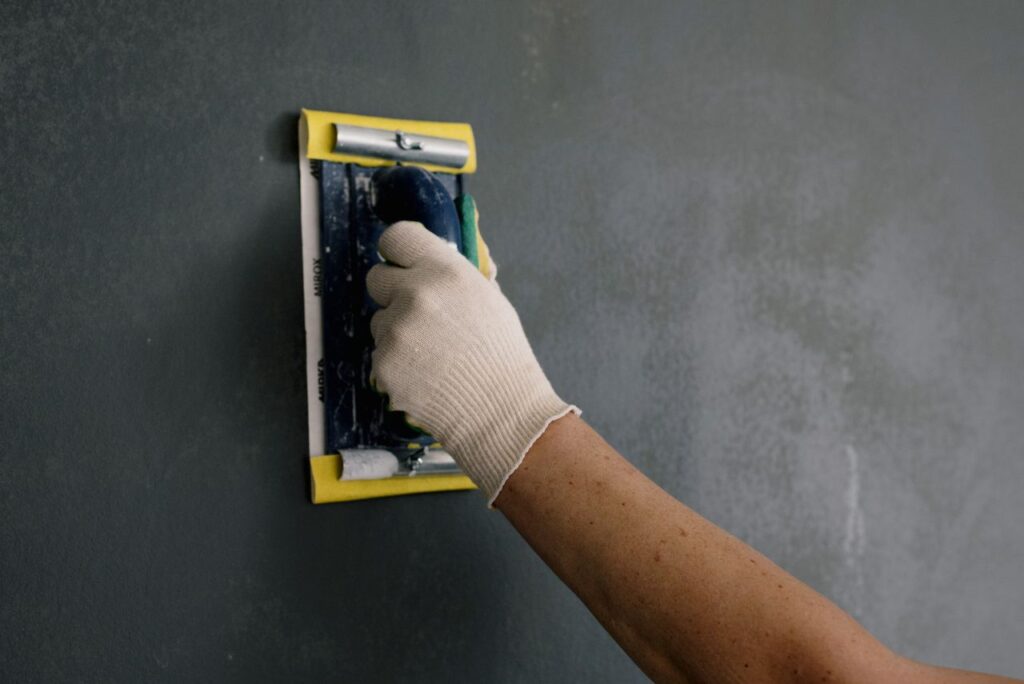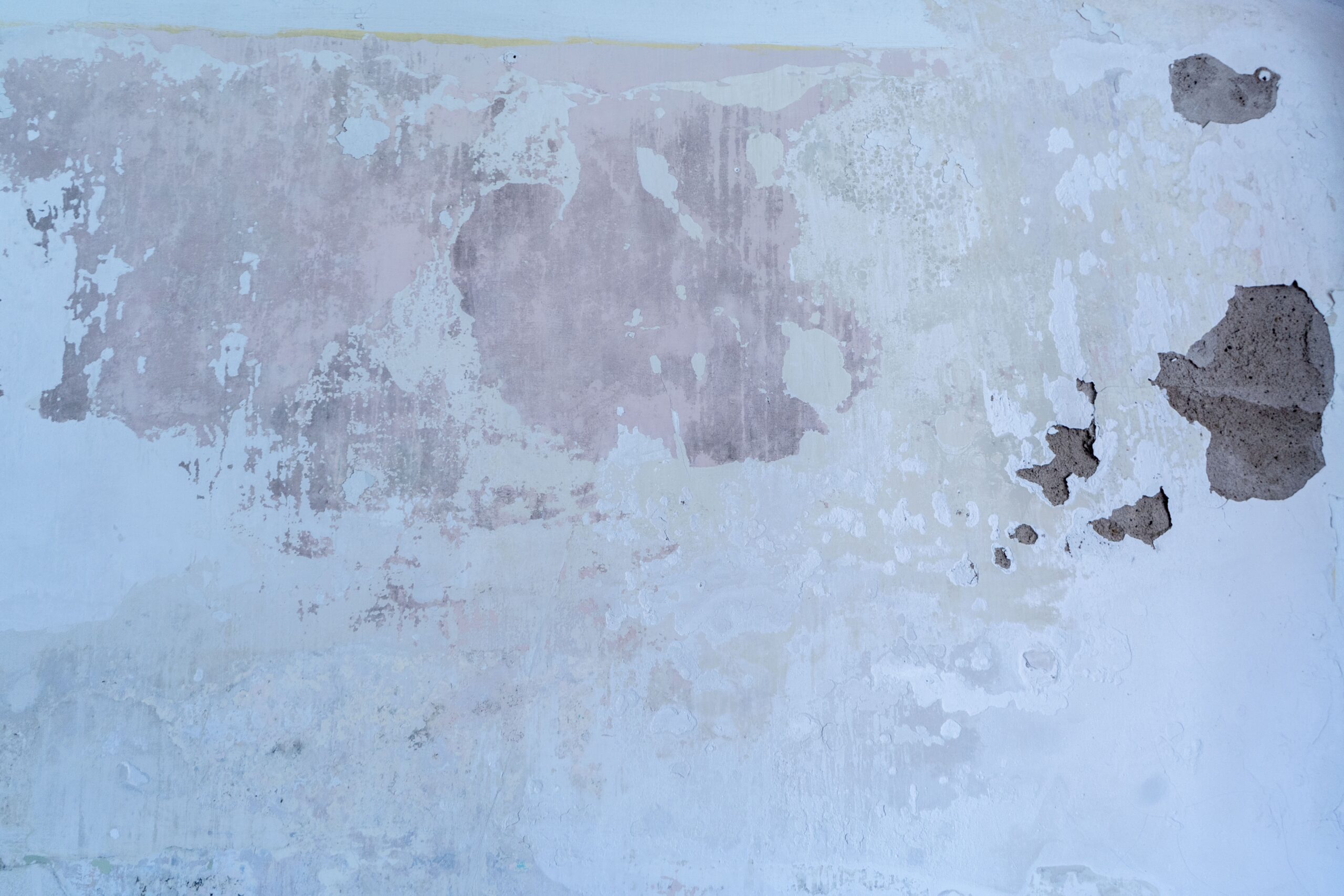Achieving smooth, polished walls after plastering is essential before applying paint or wallpaper. Sanding plaster smoothens the surface, creating a flawless finish that prepares your walls for the final touches.
Knowing the proper methods and tools can help you achieve the best results, whether you’re a DIY enthusiast or a professional. In this detailed guide, we’ll walk you through everything you need to know about sanding a wall after plastering.
We’ll cover different methods, required tools, safety precautions, and common mistakes to avoid. By the end, you’ll clearly understand how to sand a wall and ensure a smooth, professional finish.
Let’s get straight to the point.
Sanding plaster after it dries is essential for achieving a smooth, even surface before painting or applying wallpaper. This guide outlines the tools needed, including sandpaper, sanding blocks, and safety gear like dust masks and goggles.
The process starts with coarse-grit sandpaper to remove imperfections, followed by fine-grit for a polished finish. Sanding corners and edges requires extra care.
Cleaning up dust is the key to ensuring paint or wallpaper adheres properly. Avoid over-sanding, using the wrong grit, or skipping safety precautions. Patience and proper technique lead to a professional result.
Why Sand Plaster?
Sanding plaster is important for creating a smooth, even surface before applying paint, wallpaper, or other finishing touches. Plaster naturally dries with imperfections, including bumps, ridges, and uneven textures. Sanding removes these flaws, providing a perfect surface for decorating.
Benefits Of Sanding Plaster:
- Improved Aesthetic: Smooth walls are visually appealing and provide a polished look to any space.
- Better Adhesion: Sanding improves the surface texture, ensuring paint or wallpaper adheres properly.
- Enhanced Durability: A well-sanded wall is less likely to crack or peel over time.
Tools And Equipment You’ll Need
Before starting, ensure you have all the tools and materials for sanding plaster. Proper preparation will make the process smoother and more efficient.
Essential Tools And Materials:
- Sandpaper: Use coarse grit (60-80 grit) for rough surfaces and fine grit (120-220 grit) for finishing.
- Sanding Block: A manual sanding block or an electric sander makes sanding easier and more uniform.
- Dust Mask: Sanding generates fine dust that can irritate your respiratory system.
- Safety Goggles: Protect your eyes from flying dust and debris.
- Drop Cloths or Plastic Sheets: Cover floors and furniture to protect them from dust.
- Painter’s Tape: Use this to cover edges and corners you don’t want to sand.
- Vacuum Cleaner: Clean up dust as you go to maintain a clean workspace.
Preparing The Workspace
Sanding plaster can be a dusty and messy process, so it’s essential to prepare your workspace to minimise cleanup later. Follow these steps to ensure everything is set up properly.
Steps To Prepare:
- Clear the Room: Remove all furniture, decorations, and other items. If possible, cover everything with plastic sheeting or drop cloths.
- Cover Floors: Protect your floors from dust and debris by covering them with drop cloths or plastic sheets.
- Tape Edges: Use painter’s tape to cover areas you don’t want to sand, such as door frames or windowsills.
Safety Precautions For Sanding Plaster
Sanding plaster can release fine dust particles into the air, which can harm your health if inhaled. Always follow safety precautions to protect yourself during the sanding process.
Important Safety Tips:
- Wear a Dust Mask: Always wear a dust mask (N95 or equivalent) to prevent inhaling fine dust particles.
- Use Safety Goggles: Protect your eyes from dust with safety goggles.
- Wear gloves to protect your hands from irritation, especially if you’re using rough sandpaper.
- Ventilate the Room: Keep windows open and use fans to ensure good airflow and reduce dust buildup.

Step-by-Step Guide To Sanding A Wall After Plastering
Now that your workspace is ready let’s dive into the step-by-step process of sanding a wall after plastering. We’ll start with coarse-grit sandpaper to remove imperfections and finish with fine grit for a smooth surface.
1. Sand With Coarse Grit Sandpaper
Use coarse grit sandpaper to remove large imperfections, ridges, or excess plaster from the wall.
Steps:
- Attach coarse-grit sandpaper (60-80 grit) to your sanding block or electric sander.
- Begin at the top corner of the wall and work your way down, applying even pressure.
- Move the sandpaper in a circular or back-and-forth motion to sand the entire surface.
- Focus on removing any visible bumps, ridges, or rough patches.
- Continue sanding until the wall feels smooth to the touch.
2. Sand With Fine Grit Sandpaper
Once you’ve removed the major imperfections, switch to fine-grit sandpaper (120-220 grit) to achieve a smooth finish.
Steps:
- Replace the coarse sandpaper with fine-grit sandpaper on your sanding block or sander.
- Sand the wall using the same circular or back-and-forth motion, ensuring you cover the entire surface evenly.
- Pay special attention to any areas that may still have minor imperfections.
- Avoid over-sanding, as this can damage the plaster and create uneven spots.
- Continue sanding until the surface is consistently smooth.
3. Sanding Corners And Edges
Sanding tight spaces like corners and edges can be tricky, but achieving a uniform finish across the wall is essential.
Tips For Sanding Corners And Edges:
- Use a small, folded piece of sandpaper to sand corners manually.
- Consider using a corner or edge attachment for tight spaces for your sander.
- Sand slowly and carefully to ensure the corners blend seamlessly with the rest of the wall.
Cleaning Up Dust And Debris
Once sanding is complete, cleaning the walls thoroughly before painting or wallpapering is important. Dust and debris left behind can interfere with the final finish.
Steps For Cleaning:
- Use a vacuum cleaner to remove loose dust from the walls, floors, and surrounding areas.
- Wipe the walls with a damp cloth or sponge to collect any remaining dust.
- Wait until the walls are completely dry before proceeding to the next step.
Inspecting The Surface For Imperfections
Before painting or wallpapering, inspect the sanded walls for any remaining imperfections. This step ensures that the surface is flawless before applying the final coat.
Inspection Tips:
- Shine a flashlight or work lamp at different angles on the wall to highlight any uneven areas, scratches, or dents.
- If you spot any remaining imperfections, lightly sand them with a fine-grit sandpaper.
- Wipe the wall again to remove any dust created during the final sanding.
Applying A Primer
Applying a primer before painting is not always necessary, but it can enhance the paint’s adhesion and improve the finish.
How To Apply Primer:
- Choose a primer compatible with the paint or wallpaper you intend to use.
- Use a roller or paintbrush to apply a thin, even coat of primer to the sanded wall.
- Allow the primer to dry completely before painting or wallpapering.

Common Mistakes To Avoid
Sanding plaster may seem straightforward, but several common mistakes can impact the quality of your work. Here’s what to watch out for:
Over-Sanding
Over-sanding can lead to uneven surfaces or damage to the plaster. Sand gently and evenly to avoid removing too much material.
Using Incorrect Sandpaper
Choosing the wrong grit of sandpaper can make sanding less effective. Always start with coarse grit for rough surfaces and finish with fine grit for smoothness.
Skipping Safety Precautions
Never skip safety precautions like wearing a dust mask or goggles. The fine dust from plaster can cause respiratory issues and eye irritation.
Rushing The Process
Sanding requires patience. Rushing through the process can result in uneven surfaces or missed imperfections. Take your time to ensure a flawless finish.
Neglecting Dust Removal
Failing to clean up dust after sanding can ruin your final finish. Always clean thoroughly before painting or wallpapering.
Conclusion
Sanding plaster is vital in achieving a smooth, professional finish on your walls. Whether you’re preparing for paint or wallpaper, following these steps ensures your surface is flawless and ready for the next stage. Remember to prioritise safety, choose the right tools, and take your time for the best results.
By carefully sanding your plastered walls and avoiding common mistakes, you’ll be rewarded with a smooth, polished surface that enhances the aesthetic of your space.
FAQs About Plastering
How Long Does It Take To Sand A Wall After Plastering?
Sanding a plastered wall typically takes a few hours to up to two days, depending on factors like wall size, surface complexity, skill level, and tools used. For optimal results, ensure the plaster is fully dry before sanding.
Can I Use An Electric Sander For Sanding?
Yes, an electric sander can be used for sanding, making the process quicker and easier. Common types include orbital and random sanders, each suited to specific tasks. Follow the manufacturer’s instructions, wear safety gear, and select the right sandpaper grit for the desired finish.
Why Is Sanding Necessary After Plastering?
Sanding after plastering is essential to:
- Smooth out any uneven areas or imperfections for a consistent surface.
- Remove excess plaster or joint compound, ensuring a clean finish.
- Prepare the wall for painting or wallpaper by creating a receptive surface.
Overall, sanding is key for a polished, professional result after plastering.
What Is Best For Sanding Plaster?
Sanding plaster
- For sanding plaster, use a medium grit of 80.
- For finishing plaster, use a fine grit of 120.
- For super finishing plaster, use an extra fine grit of 180.
- For ultra-finishing plaster, use a super-fine grit of 240 to 320.
What Should I Do If I Accidentally Sand Too Much?
If you’ve sanded too much, follow these steps to fix it:
- Evaluate the Damage: Check the extent of over-sanding to decide the best fix. Minor issues may require minimal repair.
- Fill Gaps: For noticeable indentations, apply filler or spackle, smooth it, let it dry, and lightly sand it to blend with the surface.
- Feather the Edges: If the transition is uneven, use fine-grit sandpaper to gently feather the edges, creating a seamless blend with the surrounding areas.
- Repaint or Refinish: After achieving a smooth surface, repaint or refinish to match the colour and texture of the area for a cohesive look.

